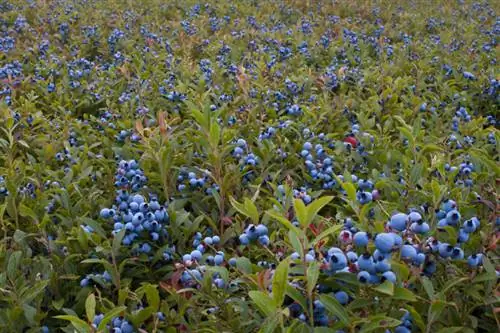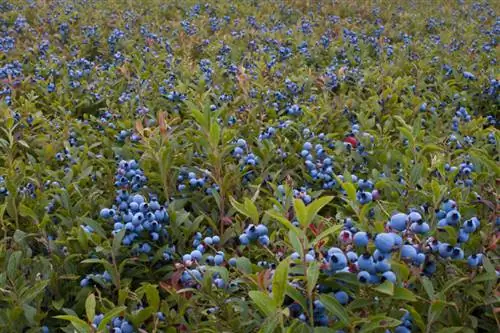- Author admin [email protected].
- Public 2023-12-16 16:46.
- Last modified 2025-01-23 11:20.
Cultivated blueberries differ from the wild blueberries in the garden not only by the different size of the fruits, but also by different requirements in terms of soil conditions and location.

Which location is ideal for blueberries?
Cultivated blueberries prefer a full sun, wind-protected location with shallow soil. In contrast to wild blueberries, they do not necessarily require acidic soil, but benefit from additions such as sand, compost and horn shavings.
Cultivated blueberries like the sun
While wild blueberries can usually be collected in partially shaded clearings in boggy forests, specially bred cultivated blueberries prefer a location in full sun. This should be open and allow sunlight to reach the plants, but should still be positioned more sheltered from the wind. When planting blueberries, you don't need to dig very deep as they tend to spread their roots shallowly.
The thing with the floor
It is firmly established in the minds of many gardeners that blueberries generally thrive in the rather acidic soil of moorland forests. However, the blueberries grown for the garden are mostly varieties from North America that do not require acidic soil to grow. However, adding the following components when planting does no harm:
- Sand
- Compost
- Horn shavings
Tips & Tricks
When purchasing blueberry plants, find out exactly what demands the respective variety has on the pH value of the soil.






